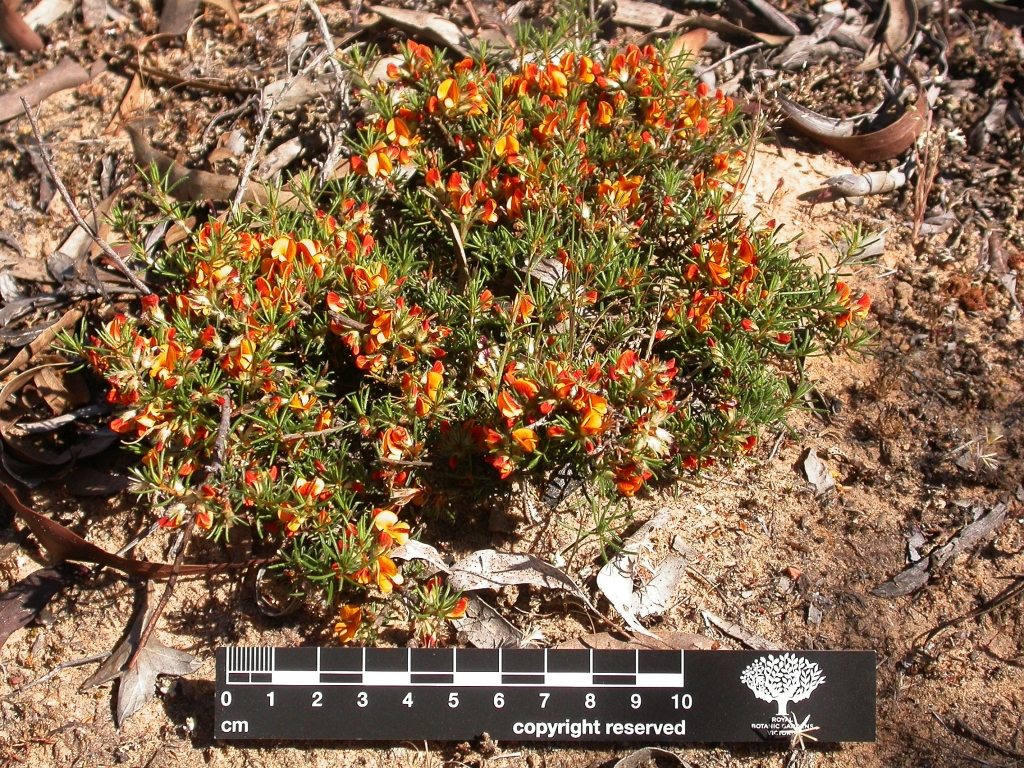Pultenaea laxiflora
Benth.Spreading shrub to 60 cm high, occasionally semi-prostrate; stems terete with pale, appressed hairs when young. Leaves alternate, linear-terete, 4–12 mm long, grooved above, usually broader at tip; apex obtuse, recurved; upper surface (if visible) light green and glabrous; lower surface glabrescent, slightly scabrous; stipules triangular, 1–2 mm long. Inflorescence c. 3–6-flowered, head-like at tips of short lateral branches, terminal shoot soon elongating; pedicels pubescent; bracts 2–3 mm long, deciduous at anthesis, apex usually split, a reduced leaf often present as a central lobe on innermost bracts; calyx 5–7 mm long, tube glabrous or hairy, lobes tapered into long, flexuose tips, densely covered with long, pale hairs; bracteoles attached at base of calyx tube, 4–5 mm long, green, leaf-like with pale, scarious stipular outgrowths at base; standard 8–9 mm wide; ovary and lower half of style covered with white, silky hairs. Pod slightly flattened, beaked, covered with pale hairs, half exserted from calyx. Flowers Oct.–Nov.
LoM, MuM, Wim, GleP, VVP, VRiv, GipP, OtP, Gold, CVU, GGr, DunT, NIS, HSF, HNF. Also SA, NSW, ACT. Scattered through drier, open-forest areas of western and central Victoria (e.g. Wangaratta area, northern fringes of Grampians, Little Desert) with isolated southern occurrences near Anglesea and Heyfield.
Flower colour varies from almost completely pale orange to dark forms with keel and wing petals dark brick-red. Pedicel length is also very variable, appearing longer when bracts have fallen. Pultenaea laxiflora is sometimes confused with P. prostrata from which it is easily distinguished by its leaf-like stipular bracteoles.
Corrick, M.G. (1996). Pultenaea. In: Walsh, N.G.; Entwisle, T.J., Flora of Victoria Vol. 3, Dicotyledons Winteraceae to Myrtaceae, pp. 765–793. Inkata Press, Melbourne.
 Spinning
Spinning

